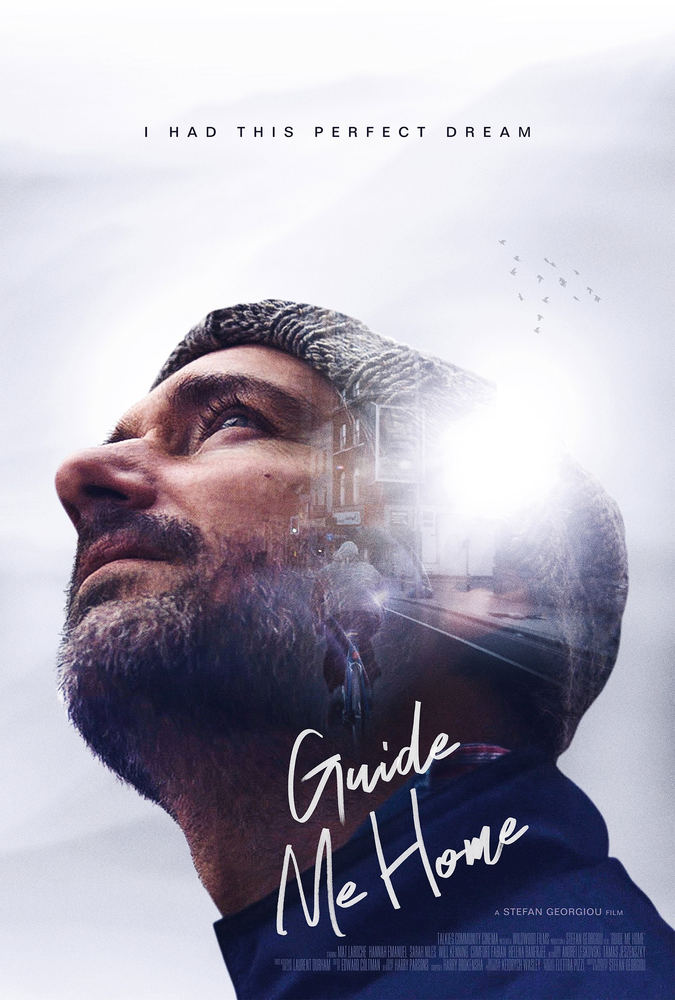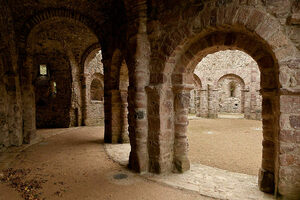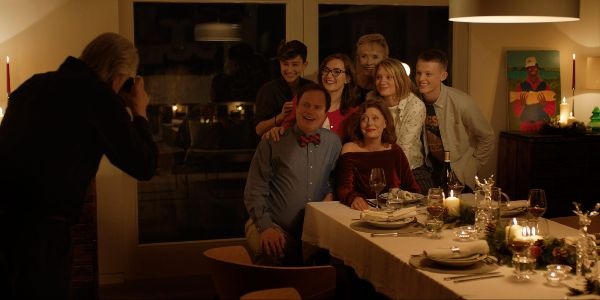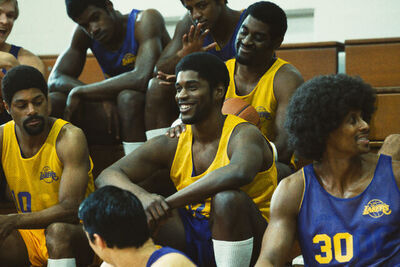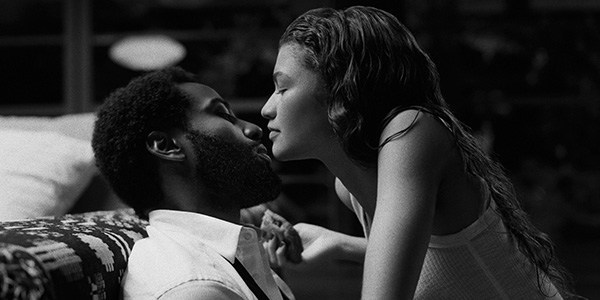“We Need To Start Living As If We Are A Part Of The Ecosystem.” Interview With Tomm Moore And Ross Stewart, Directors Of WOLFWALKERS
“It’s very easy for Tomm and myself to get influenced by all of the Irish folktales and mythology, there’s such a deep well to draw from, but I think this one tackles tales environmentalism and the divide of society,” says Ross Stewart, co-director, alongside Tomm Moore, of Wolfwalkers, “I mean there’s still a huge emphasis on family, like in Song of the Sea, but I think this tackles darker themes in it”.
I’m meeting with Moore and Stewart to discuss the third in their unofficial Celtic folklore triptych, Wolfwalkers. Set in Kilkenny during the Cromwell invasion of the 17th century, Wolfwalkers sees a young English girl, Robyn (played by Honor Kneafsey) follow her dad to Kilkenny where he has been tasked to kill the wolves that inhabit the nearby forest. This is so that it can be cut down and the land used for farming, and while Robyn at first revels in her father’s role as a wolf hunter, a chance meeting with a young girl who lives in the forest called Mebh begins to change her mind.
Colonialism and Environmentalism
Wolfwalkers tackles themes such as loss, family, environmental destruction, and colonialism. The twin issues of colonialism and environmental destruction seem particularly important for Moore and Stewart: “Colonialism is not in the past,” Moore says, “it’s still weaving its way through our daily politics, through the culture, so going back to the period where it was kind of starting full force has been interesting”. Stewart agrees, adding “and there’s still this Western mentality that nature is something to be dominated and abused; like humans have this right to be able to go in and use the wilderness as they want, whereas we need a much more holistic approach because we are just a species on the planet, so we need to start living as if we are a part of the ecosystem”.
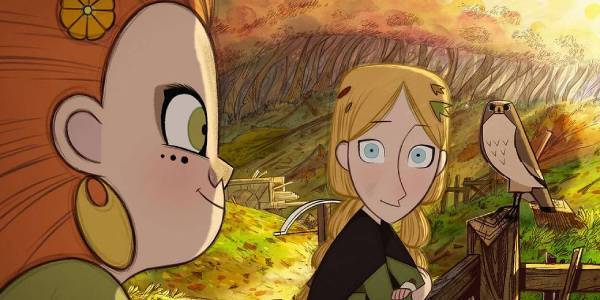
Their passion is clear when speaking with them, but it’s also true that their work speaks for itself. Wolfwalkers is an achingly beautiful film, utilising gorgeous hand-drawn animation to illustrate the great divide between nature and society itself. Perhaps a factor in this art design is the recent promotion of art-director Stewart to co-directing duties with Moore. How did Stewart handle the step up? “As art-director you do have to lead a team, but it’s a smaller team and you only focus on the visuals. Going into direction, you have to focus on music and mood and the whole holistic impression of the film, so it was different and there was a lot more responsibility, and it was stressful at times but more rewarding!”
It must help that he and Moore have known each other for so long, though. “Well Tomm and myself have been friends since we were 11″, Stewart tells me, “so on a personality level I think we’re able to weather any storm. We knew each other’s strengths and weaknesses, and Tomm taught me so much during the process of all this, so I have to give him the salute!” Moore laughs, “Well I don’t think that way! But yeah, it was really nice for me to have a partner in crime this time. The whole project was an effort in collaboration, much more than anything I’ve done before”.
Two Contrasting Worlds
Early scenes in the town of Kilkenny are boxy and sharply drawn, which is a stark contrast to the flowing openness of the forest itself. “We have these two contrasting worlds”, Stewart says, “one represents freedom and instinct and chaos, then the other is like a cage; it represents rigidity and order, and that’s why the town is full of lines and bars, and big, black oppressive shapes. It’s very geometric. It’s Robyn’s cage and so when she goes out into the forest, everything about it is sketchy and fluid and free and energetic. Very much like the wolves themselves, as they’re not caged in by anything”.
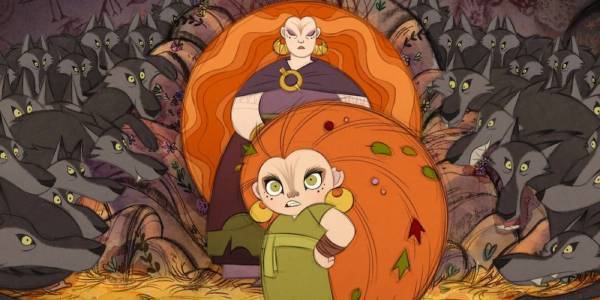
It’s the sort of idea that is made even more poetic by the art style itself. In the age of Pixar, hand-drawn animation feels like a dying art, especially as so few mainstream animation studios do it these days. “Well, I love all that (CG) stuff”, Moore says, “animation is pushing into new boundaries now with stuff like Into The Spiderverse and the little bits I’ve seen of Soul (the latest Pixar movie directed by Pete Docter). I’ve so much respect for Pete‘s ability to bring some of that UPA (United Productions of America) graphic stuff that he loves into CG. For us, though, from the beginning of Cartoon Saloon we were kind of reacting to the fact that the animation world was turning towards CG and we were thinking, let’s not forget everything that hand-drawn animation can still do. We’re not trying to preserve it in amber from the 60s or 70s, what we’re trying to do is think about what can hand-drawn animation still do use technology as well”.
It’s perhaps an unusual direction for an animation studio to take, focusing on how technology can influence classic animation rather than attempt to break ground on a new type of animation itself. Moore understands this concept but feels that would be pointless. “You end up looking like you’re trying to keep up with Pete Docter and you can’t, so you’re better doing your own thing. Every time Pixar releases a movie, the technology has already moved on and for us that’s a losing game, you know. I look at Toy Story; it was eye-popping in 1995 but it looks like an old video game now. Whereas I hope the movies we make can be as timeless as something like Bambi or My Neighbour Totoro, where you can’t tell what the technology was, you can just feel the artist’s hands”.
Closing Remarks
The mention of My Neighbour Totoro is an interesting one. I compared Cartoon Saloon to Studio Ghibli in my review, because the Japanese animation studio (founded by Hayao Miyazaki and the late Isao Takahata) is one of the last champions of hand-drawn animation and share a likeness with Cartoon Saloon in their environmental stance. Is this deliberate? “I think their spirituality comes through no matter what they do”, Moore says, “Takahata‘s gone now, but they always had a very respectful way of looking at the world, and I always loved how it was a little insight into that worldview when you saw something like Totoro or Princess Mononoke or Spirited Away. I think that’s the kind of baseline worldview we have in our stuff, too”.
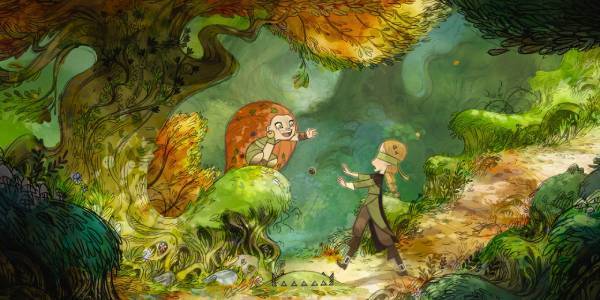
Wolkwalkers is also, I note, the first time they have made a film in Kilkenny, despite the town being the base of operations for Cartoon Saloon themselves. “Yeah that was great”, Moore says, “because we have staff from all over the world, so it was a way for us to rediscover our hometown through these sketch trips they were doing, things that we’ve gotten used to seeing like the castle and all the buildings and alleyways from Kilkenny’s past, and then because they were from other countries and often younger people, they were discovering it, so it was a really interesting process”.
Our time draws to a close and I profusely thank both Moore and Stewart for the amazing work they’re doing. With more projects on the horizon, including the Nora Twomey directed My Father’s Dragon, the future is looking very good for Cartoon Saloon, and long may it last.
Film Inquiry would like to thank Tomm Moore and Ross Stewart for taking the time to speak with us!
Does content like this matter to you?
Become a Member and support film journalism. Unlock access to all of Film Inquiry`s great articles. Join a community of like-minded readers who are passionate about cinema – get access to our private members Network, give back to independent filmmakers, and more.
Join now!
